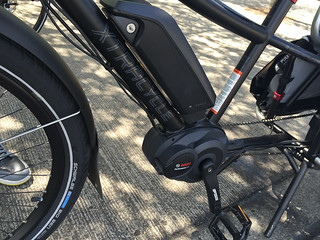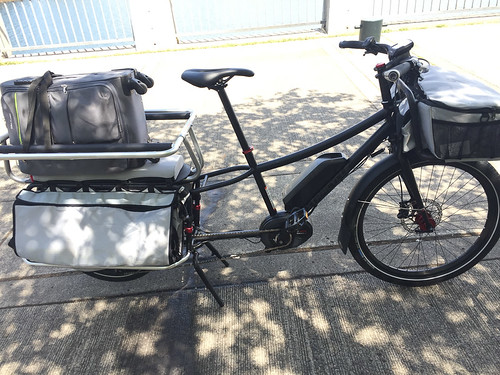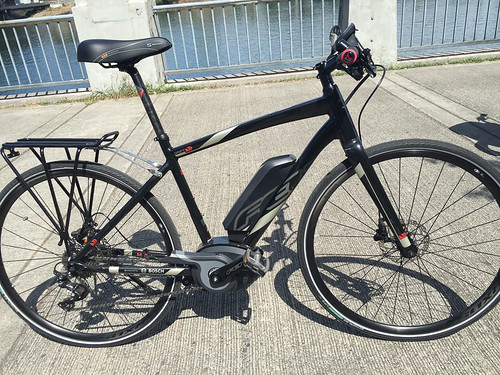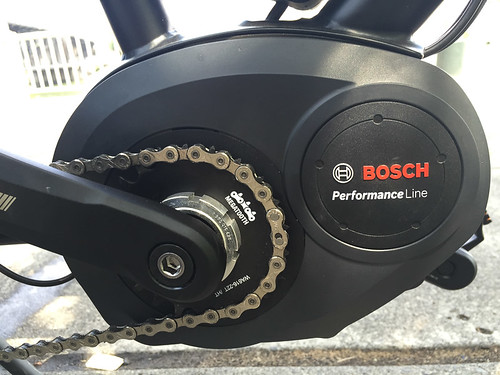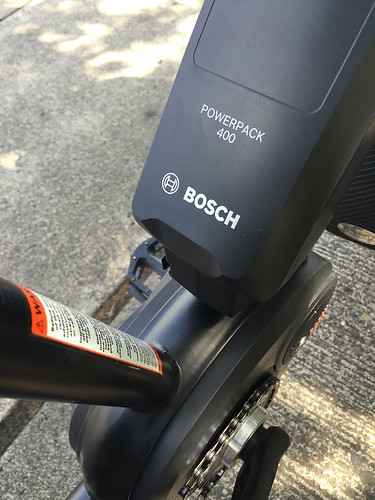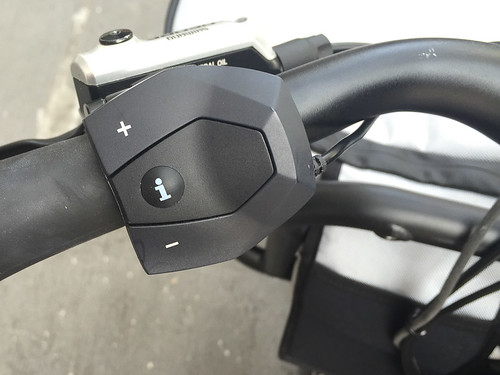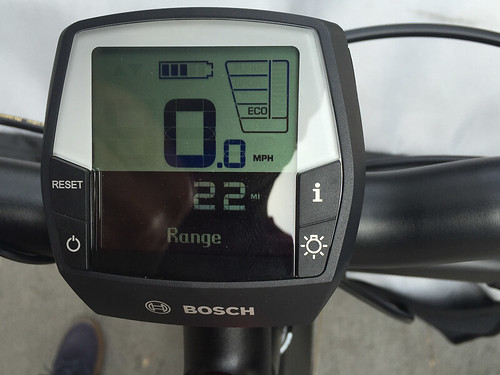Electric bikes have a very bright future in Portland. There are many reasons why: Many Portlanders love cycling and our city encourages it, we have hills and steep bridges to pedal up, our expensive housing is forcing longer bike commutes, and e-bike technology — as technology tends to do — is always getting better/lighter/cheaper.
On that note, I had the opportunity to test ride the Bosch eBike System last week. From what I’ve heard around the industry, their new mid-drive system is the best on the market. As the largest automotive parts supplier in the world and with over a century of experience, it’s not hard to fathom that Bosch could jump into this market and deliver a solid product.
I also noticed that Xtracycle decided to spec the Bosch system on their Edgerunner cargo bike. That alone is a good sign that the Bosch system is worth paying attention to.
Last week Bosch sales and marketing manager Jonathan Weinert showed up outside my office with an Edgerunner for me to ride. On the rear rack he had strapped a suitcase that added about 25-30 pounds to the load. We pedaled over to the Waterfront and did a short loop around the Willamette River.

Morrison Bridge on a loaded cargo bike without
even pedaling hard at all. (That’s Jonathan in front of me.)
The first thing I noticed about the Bosch system was how good it looks on the bike. I’m a stickler for aesthetics when it comes to bikes, and I believe e-bikes will never reach their potential in the U.S. market unless they look cool. The Bosch system is very well-designed and all you see on the bike is the drive unit wrapped around the bottom-bracket area and the battery which is about the size of a square two-liter drink bottle that fits on the downtube.
Advertisement
Bosch’s system also has an intuitive user interface. It only took a few seconds before I understood all the modes and how to cycle through them. There are four riding modes (five if you count “off”): Eco, Tour, Sport and Turbo. Eco gives you the least amount of boost (50% of what you put in) and Turbo gives you the most — a whopping 275% of your own power input. Put into wattage numbers, if you put 100 watts of power into the cranks in Eco mode you’ll get 50 watts of assist from the motor. That same power applied in Turbo mode will give you 375 watts from the motor.
And of course your range (how far you can ride before the battery dies) goes down as the power-assist goes up.
In Eco mode, you get a range of about 75 miles on a full charge in “ideal conditions” and 45 miles in “difficult conditions.” Those numbers go down to 30 and 15 in Turbo mode. If you mix between all four modes you’ll have a range of about 50 miles in good conditions.
The riding experience was really nothing much of an experience at all. And that’s the point. The bike I was on felt like just a regular bike — except of course that it had a boost of power whenever I pedaled. The feel of the e-assist’s power was amazingly smooth to the point of being non-existent, which is a huge credit to he quality of the Bosch system.
The ride was so effortless that – even on this heavy cargo bike — I found myself maxing out the speed at 19-20 mph with very little effort. (As per current laws, the motor stops working at 20 mph.)
This test ride also confirmed for me once and for all that e-bike systems that use a throttle are inferior to gear-driven ones. Having the assist react automatically to my input (instead of me having to twist or push a button for power), means I just pedal like normal, without even thinking about the motor.
Weinert pointed out that the Bosch drive unit has a microprocessor inside it that monitors your wheel’s speed, cadence, and torque whiling making measurements 1000 times per second. Those measurements are then fed into the motor to “give you just the right amount of power to make it imperceptible.”
And lest you think Weinert is just an industry flack paid to sell a product (he is actually, but hear me out), he’s also a former academic from UC Davis. Before his job at Bosch he was in China researching e-bikes’ impacts on health, transportation, and urban planning.
If you’re the market for an e-bike, definitely test ride a bike with the Bosch system installed. The one consideration is that it’s more expensive than other systems. As a comparison, the Bosch-equipped Edgerunner I rode retails for $5,750 and the Yuba Spicy Curry I rode back in May which also has a mid-drive system, retails for $4,500.
In addition to Xtracycle, you can find Bosch on several other brands including Felt, EMotion, Haibike, Lapierre and Cube. In Portland, there are four shops that have Bosch-equipped bikes in stock: Clever Cycles, Cynergy E-Bikes, Splendid Cycles, and The eBike Store.


